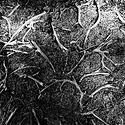Photopathe
Member
Hi!
In developer recipes (such as Ansco 130) where sodium carbonate monohydrate is called for, may one use the cheaper and more common sodium carbonate anhydrous as a substitute ? Monohydrate is 15% water so i was thinking about using 85% anhydrous + 15% water instead of the original mass of monohydrate. But maybe there is more to it in terms of chemical interactions?
Thanks!
In developer recipes (such as Ansco 130) where sodium carbonate monohydrate is called for, may one use the cheaper and more common sodium carbonate anhydrous as a substitute ? Monohydrate is 15% water so i was thinking about using 85% anhydrous + 15% water instead of the original mass of monohydrate. But maybe there is more to it in terms of chemical interactions?
Thanks!










